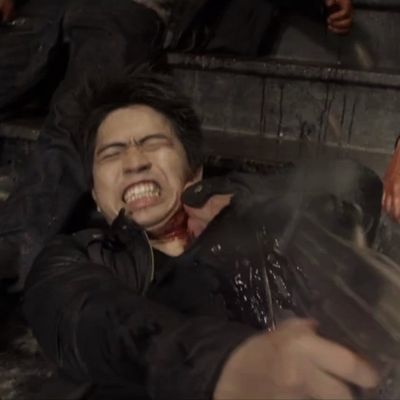
Gareth Huw Evans’s The Raid, released in 2012 but already a modern action classic, was a bloody masterpiece of claustrophobic narrative economy. Its simple, video-game-like conceit was that of a Jakarta cop stuck in a giant drug den apartment complex, being attacked by wave after wave of junkies and henchmen as he made his way to the main villains. The Raid 2 opens almost precisely where the first one left off, but then quickly does away with the typical sequel idea of staging the same film in a different environment; it abruptly, almost hilariously broadens its scope. If The Raid took place over a couple of hours, The Raid 2 takes place over years. If The Raid was mostly one guy fighting a bunch of other guys, The Raid 2 is many guys (and one exceptional gal) fighting each other in various head-spinning combinations. If The Raid was a tight, tough, flawlessly executed action flick, The Raid 2, while almost equally amazing, is a diffuse, ambitious, flawed gangster ballet. It’s so sprawling that it feels like it could be a series. Maybe it should have been. But the big screen is clearly where such explosive cinema belongs.
This time out, our hero Rama (Indonesian martial arts champion Iko Uwais), realizing his work is far from over — and he and his family far from safe — is asked to infiltrate the broader underworld in an effort to weed out corrupt cops and politicians as well as criminals. And so, he spends four years (four years!) in prison, insinuating himself into the good graces of a major crime lord’s son. Once they’re out, Rama, now called Yuda, finds himself a trusted henchman in the midst of a convoluted, low-boiling gang war full of elaborate double-crosses.
I’ll stop right there with the story description, because I’m not sure how much of the rest of the plot I fully understood. If The Raid 2 falters seriously on any level, it is that, narratively speaking, this expansion of scale doesn’t quite work. The success of The Raid clearly bought Evans an insane amount of freedom, but the limitations of the first film’s concept gave it a linear simplicity, narrowing the director’s focus: Whenever there was a fight, you knew exactly what was at stake. Now, with the new film’s sprawl of characters and betrayals, it’s hard to keep track of who’s stabbing whom in the back. Evans lacks the shorthand of a Coppola or a Scorsese, and he can’t quite juggle all these people and these subplots.
But Jesus, can this man direct an action scene. The first film was liberally shot through with moments of kinetic grace, but more than any other film I can think of, The Raid 2 blurs the line between action and dance. For all that aforementioned freedom, Evans still clearly understands the importance of limitations when it comes to action. An early fight in the prison constrains Rama in a small, narrow room, so that he can only fight one man at a time, even as the thugs line up to try to take him down. A car chase, one of the best I’ve ever seen, is built largely around the fact that our hero is being held captive in one of the cars, held back in terms of what he can do. Then there’s the guy who wields a machete as he fights an entire army of hoodlums, but refuses to use the machete itself until he gets to his main quarry. Then there’s the amazing, beautiful Hammer Girl (Julie Estelle), a deaf woman who wields two claw hammers, smashing heads and knees and gouging out eyes with Tasmanian Devil–like speed.
And yes, it’s all insanely, relentlessly gory. You could say (and some will) that the gratuitousness of the violence in The Raid 2 is a problem. But it all functions as part of the surreal dance of death: The neck-snapping and the bone-crunching and the heads being smashed in all work to punctuate the movement, the way a series of ballet steps might end in an arabesque or other pose. Without the impact, the movement is nothing.
So, focus on the dance and ignore (to some extent) the narrative. And I can’t help but think that Evans understands this on some level. One of his boldest, most beautiful fights comes early on, in a slo-mo, mud-caked, multi-man melee in prison. With everybody covered in orange mud, you lose track of who’s who, and just take in the movement, somehow both lumbering and graceful; the anonymity of the fighters feels intentional, almost transcendental. It’s like they’ve forgotten who they are and have all been absorbed into one ass-kicking Oversoul. Watching The Raid 2, you may want to join them.


